Search Images
Browse Content (p. 1249)
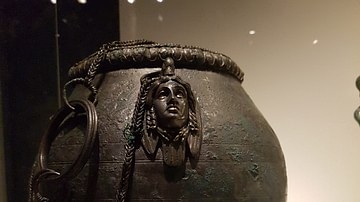
Image
Samovar, Pompeii
A samovar was used to serve warm liquids. Charcoal in the hollow centre of the vessel heated the water within the double wall. The liquid then came out of a tap decorated as a head of an eastern barbarian. Three suspension terminals feature...
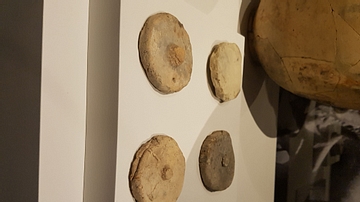
Image
Amphora Stoppers, Comacchio Shipwreck
Four ceramic amphora stoppers from the Comacchio Shipwreck. 25-1 BCE. Museo della Nave di Comacchio, (photo taken at the National Maritime Museum, Sydney, Australia)
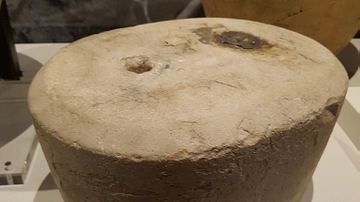
Image
Stone Weight From The Comacchio Shipwreck
A Centussis weight used to weigh the cargo for sale. The stone is inscribed with an 'M' for Magister Navis, the ship's master and the initials 'TRVF', possibly for his name - either Titus Rufius or Titus Rufrenius. The two holes on the upper...
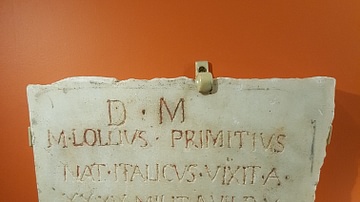
Image
Tombstone Of Marcus Lollius Primitius
Tombstone of a sailor in the Roman fleet at Misenum, raised by his wife Valeria Primilia. It records that he was Italian born (Roman citizen) and that he died at the age of 35 after having served in the navy for seven years and 10 days...
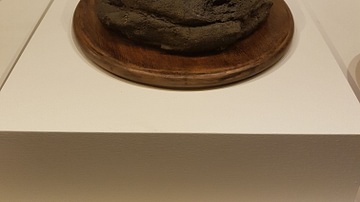
Image
A Loaf of Bread from Herculaneum
A loaf of bread from Herculaneum. 79 CE. Museo Archeologico Nazionale di Napoli, (photo taken at the National Maritime Museum, Sydney Australia) Carbonised in the eruption of Mt. Vesuvius. Before the eruption, someone in Pompeii scratched...
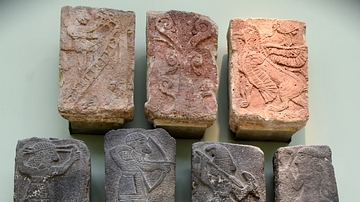
Image
Reliefs from Kapara's Palace at Tell Halaf
Some of these wall reliefs were inscribed; the inscriptions read "Palace of Kapara, son of Hadianu". The base of the south wall of Kapara's palace was lined with a series of 187 reliefs carved in black basalt alternating with red ochre-tinted...

Image
Plaque of Astarte from Alalakh
This was probably a votive offering and may depict a nude votaress. However, it is usually regarded as a representation of Astarte. 1570-1500 BCE. From Level V Palace at Tell Atchana, modern-day Hatay Province, Turkey. (The British Museum...
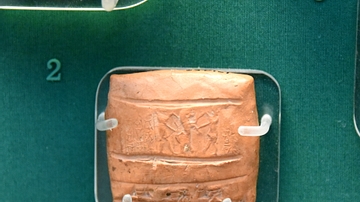
Image
Cuneiform Tablet from Alalakh with Saustatar's Seal
This clay tablet represents a lawsuit against Niqmepa King of Alalakh brought before Saustatar king of Mitanni who used a seal made about 2200 BCE and later recut for an earlier king of Mitanni, Shutarna, son of Kirta. circa 1450 BCE. From...
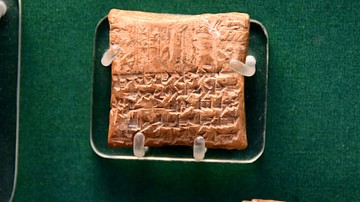
Image
Clay Tablet from Alalakh with Idrimi's Seal
Agreement for annual dues of gold and sheep to be paid to the King, either Idirimi or his son Niqmepa, who often used his father's seal. The seal's inscription reads "Idrimi, servant of the god Adad". 1500-1450 BCE. From Level IV Palace at...
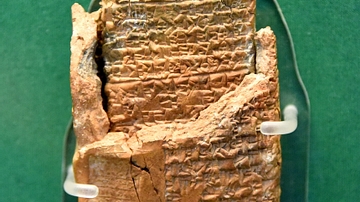
Image
Cuneiform Tablet with Envelope from Alalakh
This clay tablet still has its clay envelope. The tablet mentions a legal case before Niqmepuh, King of Iamhad (Aleppo) concerning the legacy of two houses. The seal impressions of ten witnesses (including the King) survive on the fragmentary...